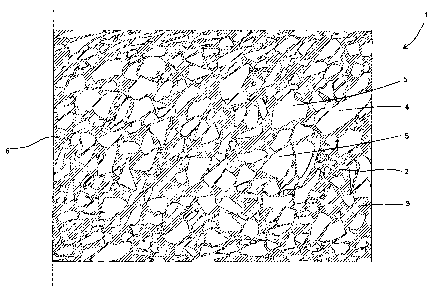Some of the information on this Web page has been provided by external sources. The Government of Canada is not responsible for the accuracy, reliability or currency of the information supplied by external sources. Users wishing to rely upon this information should consult directly with the source of the information. Content provided by external sources is not subject to official languages, privacy and accessibility requirements.
Any discrepancies in the text and image of the Claims and Abstract are due to differing posting times. Text of the Claims and Abstract are posted:
| (12) Patent: | (11) CA 2502099 |
|---|---|
| (54) English Title: | AN ANTISTATIC HOSE FOR CONVEYING FLUIDS |
| (54) French Title: | TUYAU SOUPLE ANTISTATIQUE POUR LE TRANSPORT DE LIQUIDES |
| Status: | Granted and Issued |
| (51) International Patent Classification (IPC): |
|
|---|---|
| (72) Inventors : |
|
| (73) Owners : |
|
| (71) Applicants : |
|
| (74) Agent: | AVENTUM IP LAW LLP |
| (74) Associate agent: | |
| (45) Issued: | 2010-01-05 |
| (22) Filed Date: | 2005-03-23 |
| (41) Open to Public Inspection: | 2005-09-25 |
| Examination requested: | 2008-02-21 |
| Availability of licence: | N/A |
| Dedicated to the Public: | N/A |
| (25) Language of filing: | English |
| Patent Cooperation Treaty (PCT): | No |
|---|
| (30) Application Priority Data: | ||||||
|---|---|---|---|---|---|---|
|
An antistatic hose for conveying fluids with at least one conductive layer (2) comprising a first, conductive material (3) and a second, non-conductive material (4). The first, conductive material (3) forms a basic matrix and medium sized blocks (5) of the second, non-conductive material (4) are inserted in the basic matrix of first, conductive material (3). The first, conductive material (3) forms a continuous conductive path (6) extending along the entire length of the hose (1). The second material (4) is distributed in the matrix of first material (3) in an uneven and irregular way. The first material (3) preferably comprises a thermoplastic material to which particles of a conductive material have been added, whilst the second material (4) is thermoplastic.
Le tuyau antistatique pour le transport de liquides comporte au moins une couche conductrice (2) comprenant un premier matériau conducteur (3) et un deuxième matériau non conducteur (4). Le premier matériau conducteur (3) forme une matrice de base et des blocs de taille moyenne (5) du second matériau non conducteur (4) sont insérés dans la matrice de base du premier matériau conducteur (3). Le premier matériau conducteur (3) forme un trajet conducteur continu (6) s'étendant le long de toute la longueur du tuyau (1). Le second matériau (4) est réparti dans la matrice du premier matériau (3) dans une manière inégale et irrégulière. Le premier matériau (3) comprend de préférence une matière thermoplastique à laquelle des particules d'un matériau conducteur ont été ajoutés, tandis que le second matériau (4) est thermoplastique.
Note: Claims are shown in the official language in which they were submitted.
Note: Descriptions are shown in the official language in which they were submitted.

2024-08-01:As part of the Next Generation Patents (NGP) transition, the Canadian Patents Database (CPD) now contains a more detailed Event History, which replicates the Event Log of our new back-office solution.
Please note that "Inactive:" events refers to events no longer in use in our new back-office solution.
For a clearer understanding of the status of the application/patent presented on this page, the site Disclaimer , as well as the definitions for Patent , Event History , Maintenance Fee and Payment History should be consulted.
| Description | Date |
|---|---|
| Common Representative Appointed | 2019-10-30 |
| Common Representative Appointed | 2019-10-30 |
| Revocation of Agent Request | 2018-06-06 |
| Appointment of Agent Request | 2018-06-06 |
| Appointment of Agent Requirements Determined Compliant | 2018-05-18 |
| Revocation of Agent Requirements Determined Compliant | 2018-05-18 |
| Maintenance Request Received | 2013-03-20 |
| Grant by Issuance | 2010-01-05 |
| Inactive: Cover page published | 2010-01-04 |
| Pre-grant | 2009-10-16 |
| Inactive: Final fee received | 2009-10-16 |
| Notice of Allowance is Issued | 2009-09-09 |
| Letter Sent | 2009-09-09 |
| Notice of Allowance is Issued | 2009-09-09 |
| Inactive: Approved for allowance (AFA) | 2009-09-01 |
| Amendment Received - Voluntary Amendment | 2008-09-05 |
| Letter Sent | 2008-04-17 |
| Request for Examination Requirements Determined Compliant | 2008-02-21 |
| All Requirements for Examination Determined Compliant | 2008-02-21 |
| Request for Examination Received | 2008-02-21 |
| Inactive: IPC from MCD | 2006-03-12 |
| Inactive: IPC from MCD | 2006-03-12 |
| Inactive: Cover page published | 2005-09-25 |
| Application Published (Open to Public Inspection) | 2005-09-25 |
| Letter Sent | 2005-07-12 |
| Inactive: Single transfer | 2005-06-16 |
| Inactive: IPC assigned | 2005-06-01 |
| Inactive: IPC assigned | 2005-06-01 |
| Inactive: First IPC assigned | 2005-06-01 |
| Inactive: Filing certificate - No RFE (English) | 2005-04-29 |
| Inactive: Courtesy letter - Evidence | 2005-04-29 |
| Application Received - Regular National | 2005-04-29 |
There is no abandonment history.
The last payment was received on 2009-02-06
Note : If the full payment has not been received on or before the date indicated, a further fee may be required which may be one of the following
Patent fees are adjusted on the 1st of January every year. The amounts above are the current amounts if received by December 31 of the current year.
Please refer to the CIPO
Patent Fees
web page to see all current fee amounts.
Note: Records showing the ownership history in alphabetical order.
| Current Owners on Record |
|---|
| MANIFATTURA TUBI GOMMA S.P.A. |
| Past Owners on Record |
|---|
| PIETRO MARCOLIN |